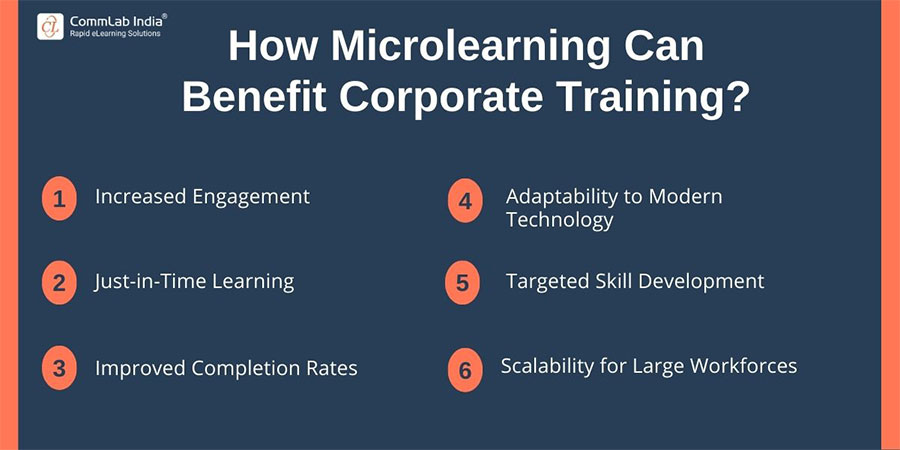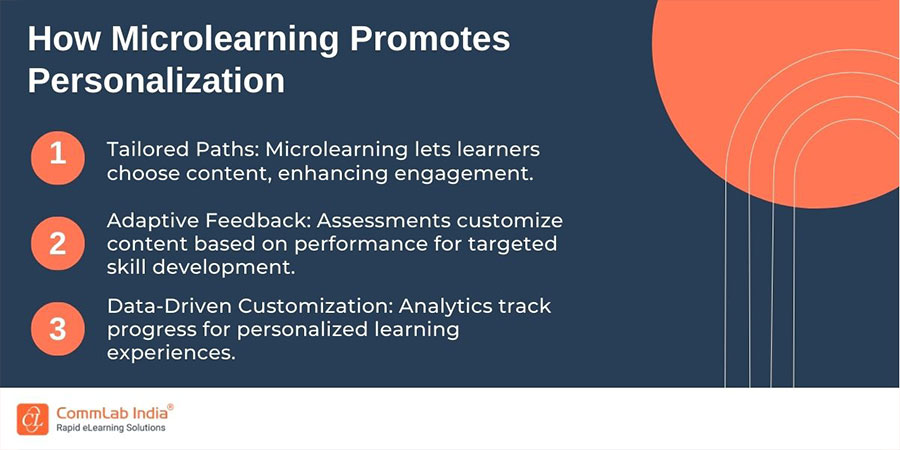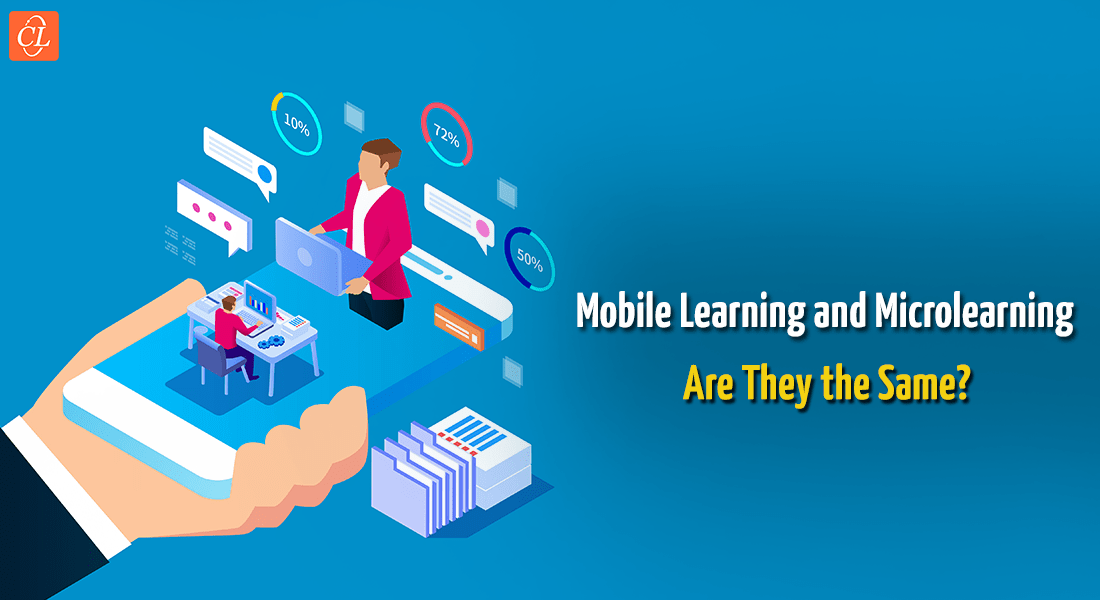Don't Believe These! 7 Common Myths About Microlearning Busted
Read on the blog as we bust common myths about microlearning, empowering your L&D programs for a revolution in corporate training!

Are you an L&D professional looking to revolutionize your corporate training strategies? Break free from traditional learning challenges by exploring the world of microlearning in this blog post. We'll debunk common myths that may be hindering your training effectiveness and showcase how microlearning can be the game-changer you've been seeking in Learning and Development.
It's time to challenge preconceptions and empower your training programs for meaningful results!
The Rise of Microlearning in Corporate Training
Microlearning has emerged as a powerful tool in corporate training, offering bite-sized, focused learning experiences. Its popularity is fueled by the modern learner's preference for quick, accessible knowledge, enhancing retention and adapting seamlessly to busy professional schedules.
How Microlearning Can Benefit Corporate Training?

- Increased Engagement: Microlearning maintains learner interest through short, focused content, enhancing learner engagement during training sessions.
- Just-in-Time Learning: Microlearning enables employees to access relevant content precisely when faced with tasks or challenges, ensuring immediate applicability.
- Improved Completion Rates: The condensed nature of microlearning encourages regular, short bursts of learning, contributing to higher completion rates.
- Adaptability to Modern Technology: Microlearning seamlessly integrates with modern technology, fostering continuous learning on mobile devices and learning management systems.
- Targeted Skill Development: Microlearning allows organizations to tailor modules to specific skills or knowledge areas, addressing unique departmental or role-based needs.
- Scalability for Large Workforces: Microlearning's scalability makes it ideal for large and dispersed workforces, ensuring standardized and high-quality learning experiences across diverse locations.
Given these benefits, it is crucial to integrate microlearning into your employee training. Before initiating the project, ensure a comprehensive understanding of the approach, including its numerous myths associated.
7 Common Myths About Microlearning Busted
Myth 1: Microlearning is Only for Simple Topics
Contrary to the belief that microlearning is suitable only for straightforward concepts, it is a versatile approach that can effectively tackle complex subjects. Microlearning modules may be concise, but they can delve deep into intricate topics, providing learners with targeted insights and knowledge.
Exploration: Microlearning's strength lies in breaking down extensive content into digestible chunks. For complex subjects, a series of microlearning modules can be strategically designed, guiding learners through a progressive learning journey. This approach ensures a thorough understanding of intricate topics without overwhelming the learner.
Myth 2: Microlearning Lacks Depth
Some critics argue that microlearning sacrifices depth for briefness. However, when designed thoughtfully, microlearning modules can offer substantial depth. The key is to focus each module on a specific learning objective and ensure it provides comprehensive coverage.
Exploration: Microlearning promotes focused learning by addressing one objective at a time. To ensure depth, instructional designers must craft modules that include relevant examples, case studies, and practical applications. By emphasizing quality content over quantity, microlearning can deliver meaningful depth within a short timeframe.
→ Download Now: Microlearning 101 [eBook]
Myth 3: Microlearning is Ineffective for Skill Development
There's a misconception that microlearning is more suited for knowledge-based learning than skill development. In reality, microlearning is a potent tool for honing skills, especially when combined with hands-on activities and simulations.
Exploration: To facilitate skill development, microlearning can incorporate interactive elements such as simulations, scenario-based exercises, and quick drills. These activities engage learners actively, allowing them to apply new skills in a controlled environment. The repetitive nature of microlearning reinforces skill acquisition, making it a valuable asset in training programs.
Myth 4: Microlearning is Only for Millennials
Some believe that microlearning caters exclusively to younger generations. However, its adaptability makes it suitable for learners of all ages. The personalized, on-demand nature of microlearning appeals to a broad audience.
Exploration: Microlearning's appeal goes beyond age demographics. It aligns with the varied preferences of modern learners who seek flexibility and efficiency. By offering bite-sized content, organizations can accommodate diverse learning styles, making training accessible and engaging for everyone.
Myth 5: Microlearning Lacks Personalization
Critics argue that microlearning's standardized format may hinder personalized learning experiences. In reality, microlearning can be highly personalized by leveraging data analytics and adaptive learning technologies.
Exploration: With advanced learning platforms, organizations can track individual progress, preferences, and performance. This data can be used to tailor microlearning content to the specific needs of each learner. Personalized microlearning paths enhance engagement and ensure that learners receive content that aligns with their unique requirements.

Myth 6: Microlearning is Expensive to Implement
Some organizations hesitate to adopt microlearning due to perceived high implementation costs. However, the modular nature of microlearning allows for cost-effective development and easy updates.
Exploration: Creating microlearning modules is often more cost-effective than developing lengthy eLearning courses. The modular structure allows for incremental development, making it financially feasible for organizations with budget constraints. Additionally, the ease of updates ensures content remains relevant without significant expenses.
Myth 7: Microlearning is a Passing Trend
Skeptics argue that microlearning is just a passing trend. However, its continued growth and adoption by leading organizations demonstrate its enduring impact on corporate training.
Exploration: Microlearning's success is rooted in its alignment with modern learning preferences. As long as learners value flexibility, efficiency, and personalized learning experiences, microlearning will remain a cornerstone of effective corporate training. Organizations that embrace microlearning position themselves to adapt to evolving learning needs.
Watch this video for tips to designing winning microlearning assets:
Parting Thoughts
Microlearning stands as a dynamic and effective approach to corporate training, dispelling common myths that may deter organizations from its adoption. By recognizing its versatility, depth, and adaptability, businesses can harness the true potential of microlearning to drive successful and engaging learning experiences for their workforce. Don't be swayed by misconceptions; embrace microlearning as a strategic tool for the future of corporate training.
Interested to know more about microlearning and if it is the right strategy for your corporate eLearning? Grab our eBook and explore the approach in detail:





